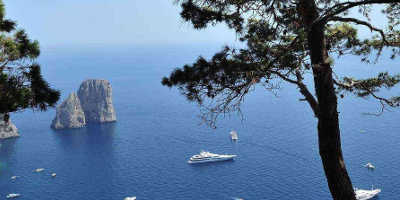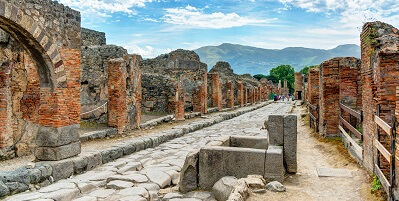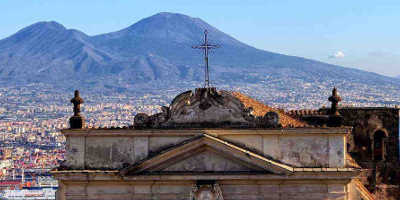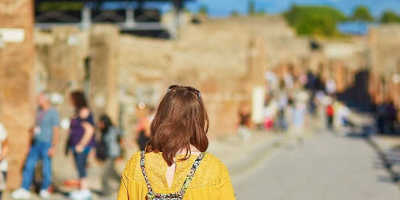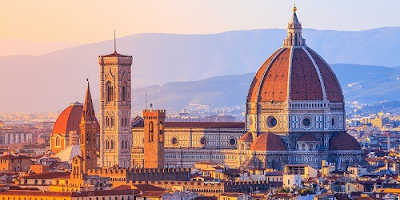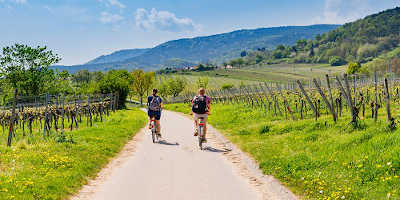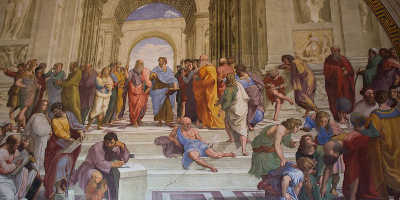5 Unusual Facts you might not know about Pompeii
World famous, Pompeii has held people’s fascination for centuries. Despite its fame, however, the ancient city is still shrouded in mystery, let us enlighten you with these 5 unusual facts…
Pompeii is the biggest archaeological site in the entire world, famous for its catastrophic ending by the volcano Mount Vesuvius in 79 A.D. Despite its fame, the city still has some fascinating secrets hidden within. Here is our list of the most unusual facts about the ancient city of Pompeii.
-
They had no word for ‘Volcano’
The story of Pompeii’s demise becomes even more tragic after historians discovered the Pompeii citizens had no knowledge of what the nearby Vesuvius actually was. Having no knowledge of any volcanos, the city merely thought it was a large mountain. The actual word ‘volcano’ wasn’t invented until the 1610s, with the word derived from “Vulcan,” the Roman God of Fire. Given the same attributes of the Greek Hephaestus, the god of fire and blacksmiths, Vulcan’s worship was very ancient. Not only a god of fire but also one of masculine fertility who could make the harvest productive as well as manufacture metal and art. The Romans also relied on fire to bake basic goods such as bread, and so Vulcan also became the patron of ovens and baked produce. Fearing the destructive powers of fire the Romans dedicated a whole day to Vulcan called the Volcanalia, a festival held annually on the 23rd of August where people would throw small fish into the fire as sacrifices. It is ironic that the Pompeiians worshipped a god, who in their eyes, destroyed them. Of course, nowadays we have no such belief in Vulcan, with volcanic eruptions being a part of nature. But it is sad to think that the people of Pompeii had no comfort in that thought, more likely believing they had upset the gods and were now being punished.
-
Citizens had great teeth
When Pompeii was rediscovered and excavated in the 1800s, the skeletal remains of the citizens were revealed. These remains held vital information of these ancient beings, showing their cause of deaths, their customs, as well as their physical attributes. The people exploring the remains are not just archaeologists but a multidisciplinary team of computer engineers, radiologists, doctors, historians and orthodontists. Using their different areas of expertise such teams have been able to uncover unbelievable detail concerning the victims of Pompeii. One such detail was the discovery of their teeth, which were unexpectedly healthy for their time. By using tomography, a process of creating a 2D image of a 3D object by using a 16-layer CAT technology machine, scientists have been able to analyse the skeletal remains in detail. They noted, that apart from a few cavities probably due to a lack of dental care and know-how, the ancient Pompeiians had a really good set of teeth. Scientists have put this done to their diet, which was high in fruits and vegetables and low in sugars, something that we could learn from today. Another reason for their uncommonly healthy teeth and diet is the high levels of fluorine that was present in the air and in the water influenced by Mount Vesuvius.
-
Brothels were everywhere
Throughout the excavation, archaeologists have discovered 25 brothels scattered all over the city. There are numerous preserved erotic frescoes within the brothels which display the services in an illustrative menu. The largest and most preserved brothel found is the Lupanare. The name comes from ‘Lupa’ (she-wolf), which was slang meaning prostitute. Saying this, it’s important to mention that this is not a universal view. There has been much debate around whether the Roman’s were as obsessed with sex as we so readily believe. With the amount of phallus sculptures, drawings and inscriptions scattered around the city it is not foolish to think that the Romans weren’t shy about having a good time. But, another theory that’s been put forward is that the many drawings and frescos were more of a joke, and that the Romans were not any more interested in sex than we are today, with the phalluses representing male power more than anything else, which can definitely be supported by the unequal society of ancient Rome.
-
Graffiti was very common
Graffiti might be thought of as a modern-day phenomenon, but historians have found hundreds of historic graffiti scattered within this ancient city. With tangible testimonies of the citizens everyday life, spanning from poetry to crude messages. These many different graffiti works depict how humans are actually quite similar throughout time, with messages and insults that could easily fit into our modern-day graffiti. Not only this, but graffiti offers essential insights into the people, time and culture of ancient Pompeii. More recently in 2018, ongoing excavations revealed a new line of graffiti that threw into question the historical date of Vesuvius’s eruption. There has, for some time, been a debate between scholars over whether the eruption occurred during late summer or early autumn time. The graffiti found may have put an end to this August vs. October debate, as it reads: ‘XVI K Nov in ultsit pro masumis esurit’ which translates to ‘On October 17, he over-indulged in food’. Written in charcoal, the nature of the writing suggests it was done just before the eruption of Vesuvius, as charcoal written a long time beforehand would not have lasted as long prior to the destruction of the city.
-
It was originally Greek
Pompeii is famous for its Roman city past, but it was actually, in fact, a Greek city before it became Roman. This can be seen by some of the oldest structures unearthed, which appear to be designed by ancient Greek settlers who made the town part of the Hellenistic sphere in the 8th century BC. An independent Greek town, it fell under the influence of Rome in the 2nd century BC, with the Bay of Naples becoming an attraction for wealthy vacationers from Rome who relished the Campania coastline. From there Pompeii came to be populated by Rome’s most distinguished citizens, flourishing into a thriving town of elegant houses, elaborate villas, factories, shops, brothels, the lot. People gathered in the 20,000 seat amphitheatre and lounged in the open-air squares and marketplaces. With such fertile land, mountains and beautiful coastline, it is no wonder Pompeii became so popular.

